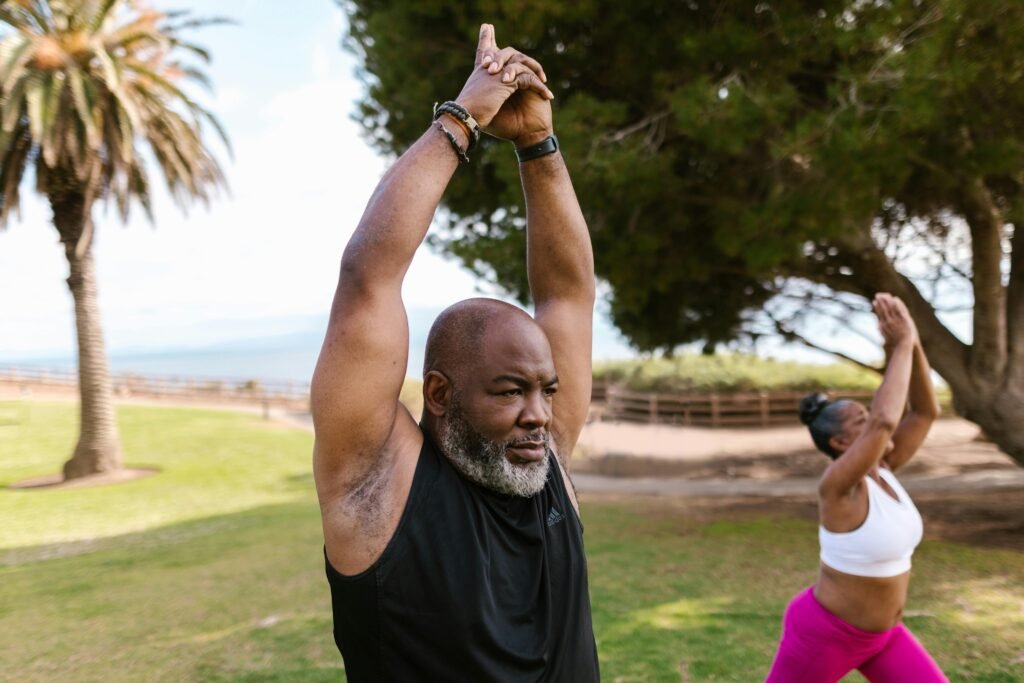Understanding Leg Cramps in Seniors
Causes of Leg Cramps in Older Adults
Leg cramps in seniors are often due to age-related muscle loss, known as sarcopenia, medication side effects, or inadequate nutrition. Reduced physical activity can also lead to muscle stiffness and poor circulation, increasing the likelihood of cramps. Dehydration and electrolyte imbalances are other common triggers that exacerbate muscle spasms.
Common Symptoms and When to Seek Help
Leg cramps often manifest as sudden, sharp pains in the muscles of the legs, usually occurring at night. They can cause lingering soreness or tenderness after the spasm. While occasional cramps are normal, frequent episodes may indicate an underlying health issue such as nerve damage or a deficiency in essential vitamins and minerals. Consult a healthcare provider if cramps are persistent and severe.
The Role of Nutrition in Muscle Health
Importance of a Balanced Diet
A balanced diet rich in key nutrients is critical for maintaining muscle health in seniors. Such a diet aids muscle repair, improves circulation, and prevents degenerative conditions. Consuming sufficient amounts of proteins, vitamins, and minerals helps mitigate the risk of cramps and supports overall muscle function.
Key Nutrients for Muscle Function
Protein, vitamins B12 and D, calcium, magnesium, and potassium are essential for optimal muscle function. These nutrients aid muscle contractions, repair, and relaxation, and help maintain nerve health. A diet lacking in these components can lead to increased muscle cramping and fatigue in seniors.
Eggs: A Nutrient Powerhouse
Protein and Muscle Repair
Eggs are a complete protein source pivotal for muscle repair and maintenance, vital in reducing age-related muscle loss. Each egg provides high-quality protein that helps rebuild muscle fibers and reduce muscle fatigue, making them a beneficial food for seniors striving to maintain muscle strength.
Vitamin D and Calcium Absorption
Eggs are among the few natural food sources that provide vitamin D, which is crucial for calcium absorption and muscle contraction. Seniors often struggle to get enough vitamin D, especially those who spend less time outdoors. Including eggs in the diet helps support bone and muscle health, reducing the risk of cramps. Vitamin D and Calcium Absorption.
Vitamin B12 for Nerve Health
Eggs are rich in vitamin B12, protecting nerve health by ensuring the proper function of the nervous system. A depleted B12 level can lead to nerve dysfunction, causing muscle spasms and cramps. Regular intake of eggs can thus help maintain nerve integrity by preventing deficiencies.
Recommended Egg Consumption for Seniors
Moderate egg consumption, around 6 to 7 eggs per week, is generally safe for seniors and doesn’t significantly impact cholesterol levels. However, individuals with high cholesterol or heart disease should consult a doctor before increasing their egg intake. Eggs provide a wholesome option for muscle health.
Bananas: Potassium-Rich Superfood
Potassium and Muscle Contraction
Bananas are one of the best sources of potassium, essential for maintaining muscle contraction and nerve function. A medium banana contains approximately 420 mg of potassium, helping regulate muscle contractions and preventing cramps. Consistent consumption ensures proper nutrient levels for senior muscle health. Potassium-rich Foods.
Magnesium in Bananas for Relaxation
Magnesium is another vital mineral found in bananas, facilitating muscle relaxation and reducing excitability. It supports ATP production, which provides energy for muscle contractions. Regular intake of magnesium-rich foods like bananas helps prevent cramping and supports overnight muscle recovery.
Vitamin B6 and Nerve Function
Bananas also provide vitamin B6, contributing to nerve health by regulating neurotransmitters essential for muscle movement. Low vitamin B6 levels can lead to increased muscle cramping and stiffness. By providing about 0.4 mg per banana, they significantly contribute to senior dietary needs.
Ideal Banana Intake for Seniors
For optimal muscle health, seniors should aim for one to two bananas daily. However, given their sugar content, diabetics need to pair them with fiber-rich foods to avoid sugar spikes. This practice ensures better absorption and helps keep muscles cramp-free.
Nuts and Seeds: Boosting Muscle Strength
Magnesium and Potassium Sources
Nuts and seeds such as almonds, cashews, and pumpkin seeds are rich in magnesium and potassium, which are crucial for preventing cramps. A single ounce of these foods can cover a significant portion of daily mineral needs, assisting muscle function recovery after physical activity.
Healthy Fats and Circulation
Healthy fats present in nuts and seeds improve circulation by lowering muscle inflammation and ensuring muscles receive sufficient oxygen and nutrients. Omega-3 fatty acids in walnuts and flax seeds contribute to reducing muscle soreness and inflammation.
Anti-inflammatory Properties of Nuts
Chronic inflammation can lead to muscle fatigue and cramping. Nuts and seeds contain antioxidants that actively lower inflammation levels, thus aiding long-term muscle health and reducing the frequency of cramps.
Best Nuts and Seeds for Seniors
Almonds, pistachios, and pumpkin seeds are excellent options for seniors. These nuts and seeds boast high levels of magnesium, potassium, and beneficial fats. Consuming them regularly can markedly reduce cramping episodes and support muscle recovery.
Combining Foods for Optimal Muscle Health
Pairing Eggs with Vitamin D-rich Foods
Combining eggs with other Vitamin D-rich foods like fortified dairy products or fatty fish can help seniors meet their daily nutritional requirements, further reducing the risk of cramps caused by vitamin deficiencies.
Incorporating Bananas into the Diet
Bananas can elevate the potassium levels in the body, especially beneficial when integrated into meals with other flavored foods. Mixing them with yogurt or smoothies can enhance nutrient absorption.
Snack Ideas with Nuts and Seeds
Nuts and seeds make the perfect snacks. Seniors can add a handful to salads, oatmeal, or yogurt. Consuming them with other nutrient-dense foods ensures comprehensive nutrient coverage, enhancing muscle and nerve health.
Lifestyle Tips for Reducing Leg Cramps
Importance of Hydration
Dehydration is a common cause of muscle cramps. Seniors should aim to drink at least 6 to 8 glasses of water daily. Including electrolyte-rich foods like bananas and coconut water helps maintain fluid balance.
Role of Exercise and Stretching
Regular exercise and stretching are vital for maintaining muscle flexibility and strength, specifically targeting muscle cramps. Senior-friendly exercises like walking, swimming, or yoga can help ward off stiffness and cramps.
Supplements and Medical Advice
In addition to dietary changes, supplements may be necessary for seniors facing chronic deficiencies. Consultation with healthcare providers will ensure safe supplementation, tailored to individual health needs.
FAQ
What causes leg cramps in seniors?
Leg cramps are caused by factors like muscle fatigue, nutritional deficiencies, and poor circulation, common among seniors. Age-related muscle loss and side effects from medications can also contribute to frequent cramping episodes.
How can eggs help prevent leg cramps?
Eggs are excellent sources of protein, vitamin D, and B12, essential for muscle repair, nerve health, and calcium absorption, reducing the risk of cramps and supporting overall muscle function in seniors.
Are bananas effective in relieving muscle cramps?
Yes, bananas supply key electrolytes such as potassium and magnesium, which are vital for regulating muscle contractions and preventing spasms. Vitamin B6 in bananas also supports nerve health.
Which nuts are best for muscle health in seniors?
Pistachios, almonds, and pumpkin seeds are particularly beneficial due to their high magnesium, potassium, and healthy fat content, aiding in muscle relaxation and cramp prevention.


